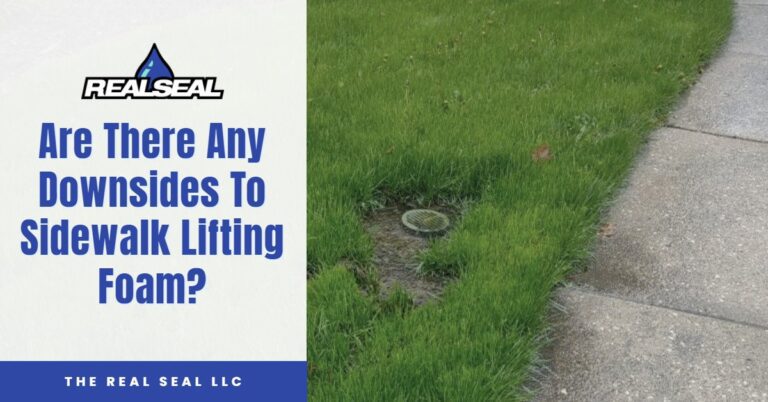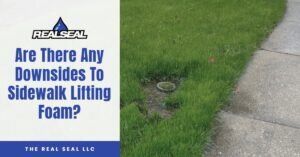If you’re wondering if there are any downsides to sidewalk lifting foam, we’re going to set the record straight. There aren’t! In this article, we talk about six benefits of sidewalk lifting foam, why you need sidewalk lifting foam, why your sidewalk may be sinking, and how much sidewalk lifting foam costs.
How Does Sidewalk Lifting Foam Work?
If your sidewalk is sinking into the soil, you might be thinking of breaking apart the old concrete and pouring a new one. But wait, there’s an easier solution out there. Experts can pump polyurethane foam underneath your sidewalk, filling in any voids, lifting it back to place, and leveling it out with the rest of your concrete.
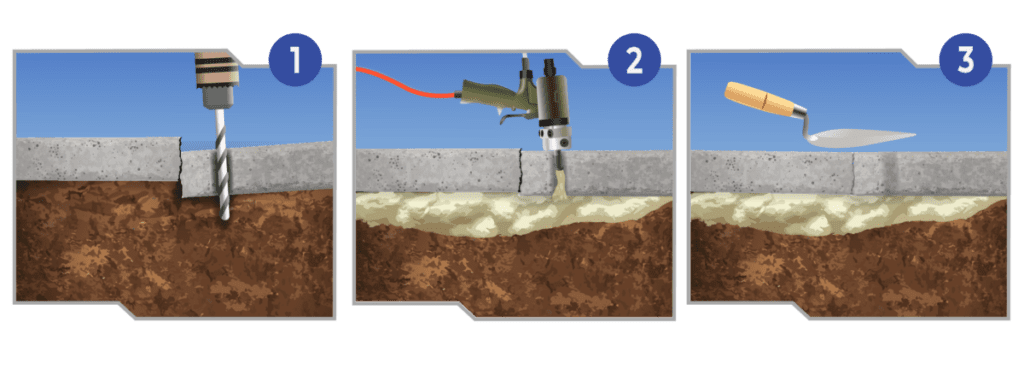
Are There Any Downsides To Sidewalk Lifting Foam?
The answer is no. In fact, sidewalk lifting foam (also called polyjacking) comes with six major benefits that make it one of the best concrete leveling solutions out there.
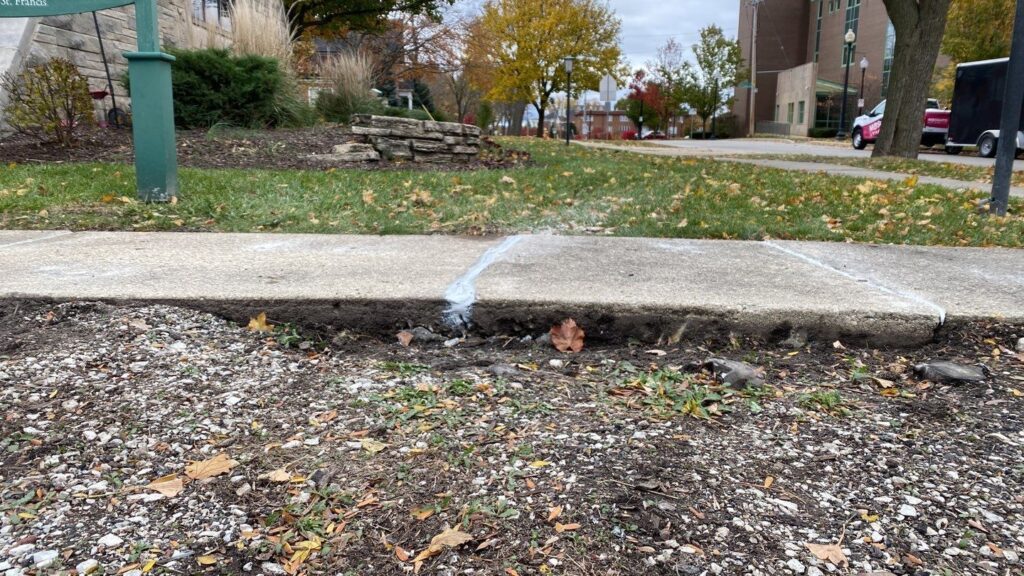
- It’s fast and effective – Once the foam has been injected underneath your sidewalk, it only takes 15 minutes for it to become fully usable again. If you were to replace the concrete, you’d have to wait days for the concrete company to come out, pour the new slab, and wait for it to cure. Mudjacking, another alternative to polyjacking, involves pumping a cement/sand slurry underneath your slab. This method takes around 24 – 72 hours to dry and become usable.
- It doesn’t require any heavy excavation – In order to pump the foam underneath your concrete, all that’s needed is small dime-sized holes. You don’t need to worry about trucks or large machinery tearing up your yard.
- It’s lightweight – The concrete foam used by The Real Seal only weighs around 2.5 to 4 pounds per cubic foot. The real reason your sidewalk is sinking is that the soil underneath is either not strong enough to hold your concrete, or it’s filled with voids. Pouring a new slab or pumping a mudjacking slurry will still not solve the problem, and the slab will sink again.
- It’s non-toxic – Sidewalk lifting foam is non-toxic and inert. Inert means that the foam won’t shift or move if it comes in contact with water, preventing the foam from leeching any chemicals into your soil or grass.
- It’s cost-effective – By pouring a new slab, you won’t actually solve the real issue, and your concrete will sink again. Then, you’ll have to break apart the new one and pour another one. Sidewalk lifting foam will raise your concrete and prevent any further sinkage, making it a cost-effective solution.
- It’s waterproof – Sidewalk lifting foam is hydrophobic. This means that if water drains underneath your sidewalk, the foam won’t wash away. Compare that to the slurry used in mudjacking, which will wash away if it comes in contact with water.
Why Do You Need Sidewalk Lifting Foam?
There are a few reasons why you might need sidewalk lifting foam. Some of those include:
- Trip hazards – If you’re tripping over your sidewalk every time you walk into your home, we recommend getting that fixed.
- Lawsuits – If someone is on a run or walking past your home and they trip over your sidewalk, you could be looking at a potentially stressful and expensive lawsuit.
- Resale value – If you’re looking to sell or home or plan on selling it in the future, any uneven sidewalks could impact the value of your property appraisal.
- Appearance – Overall, uneven or sunken sidewalks are unsightly and diminish the appearance of your home.
When Do You Need Sidewalk Lifting Foam?
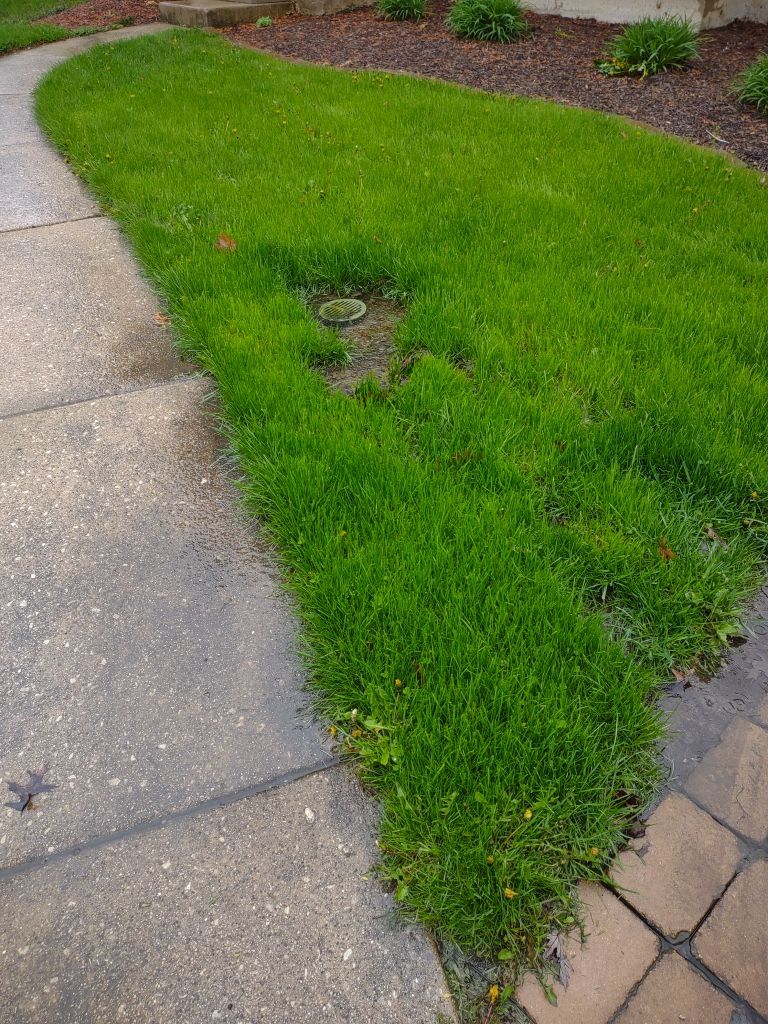
You might be wondering why your sidewalk is sinking into the soil below it. Here are a few reasons.
- There’s poor drainage around your sidewalk – If your property is sloped towards your sidewalk or your gutters are dumping water right at the base of your concrete, the soil underneath could be washing away.
- The soil underneath your sidewalk wasn’t compacted – Before any concrete slabs or sidewalks are poured, the soil underneath must first be compacted. This decreases the space between the soil particles and eliminates any voids in the dirt. If the soil wasn’t compacted properly or at all, your sidewalk could sink into the pockets below.
- The soil is expansive – Expansive soil, or any soil that contains a lot of clay, can grow and shrink based on how much moisture is in the dirt. If the soil swells with water, your sidewalk could lift up. Then, when the soil dries, your sidewalk will sink and potentially crack.
- The soil is filled with tree roots – Tree roots can lift and crack your sidewalk. Then, if the tree roots die or absorb all the water in the soil, they can leave behind pockets under your sidewalk, allowing it to sink.
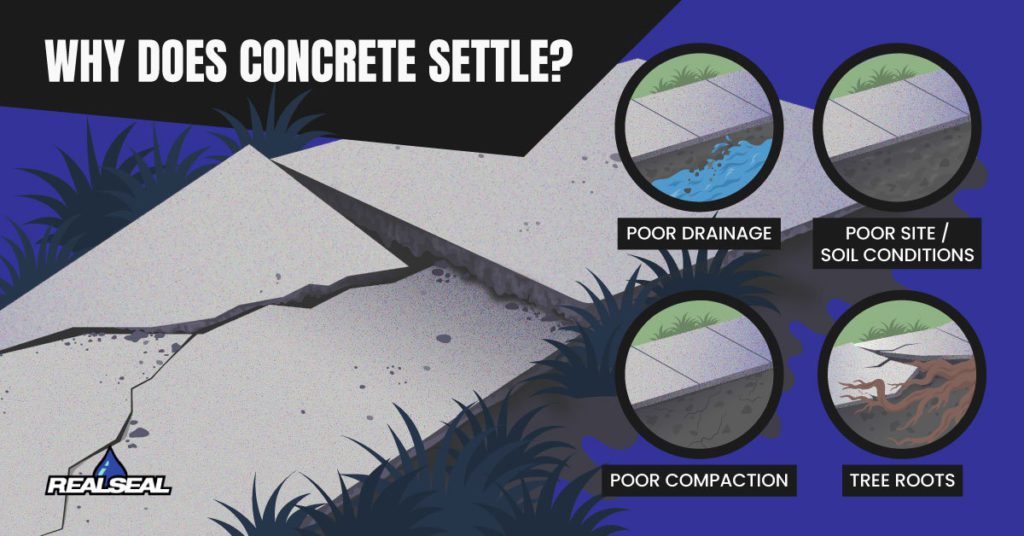
How Much Does Sidewalk Lifting Foam Cost?
Sidewalk lifting foam in the Chicago areas usually starts around $800. It just depends on the length, width, and sinkage of your sidewalk. Polyurethane foam can also lift driveways, patios, and interior concrete slabs, which can start at around $1,500.
Read more: How Much Does Concrete Leveling Cost?
Who Offers Sidewalk Lifting Slab Near Me?
If you live in the Greater Chicago area, call The Real Seal today! We can lift and level any sunken sidewalks, patios, driveways, and slabs. We also offer foundation repair, crawl space repair, foundation waterproofing, and more. Call now for your free inspection and estimate.
